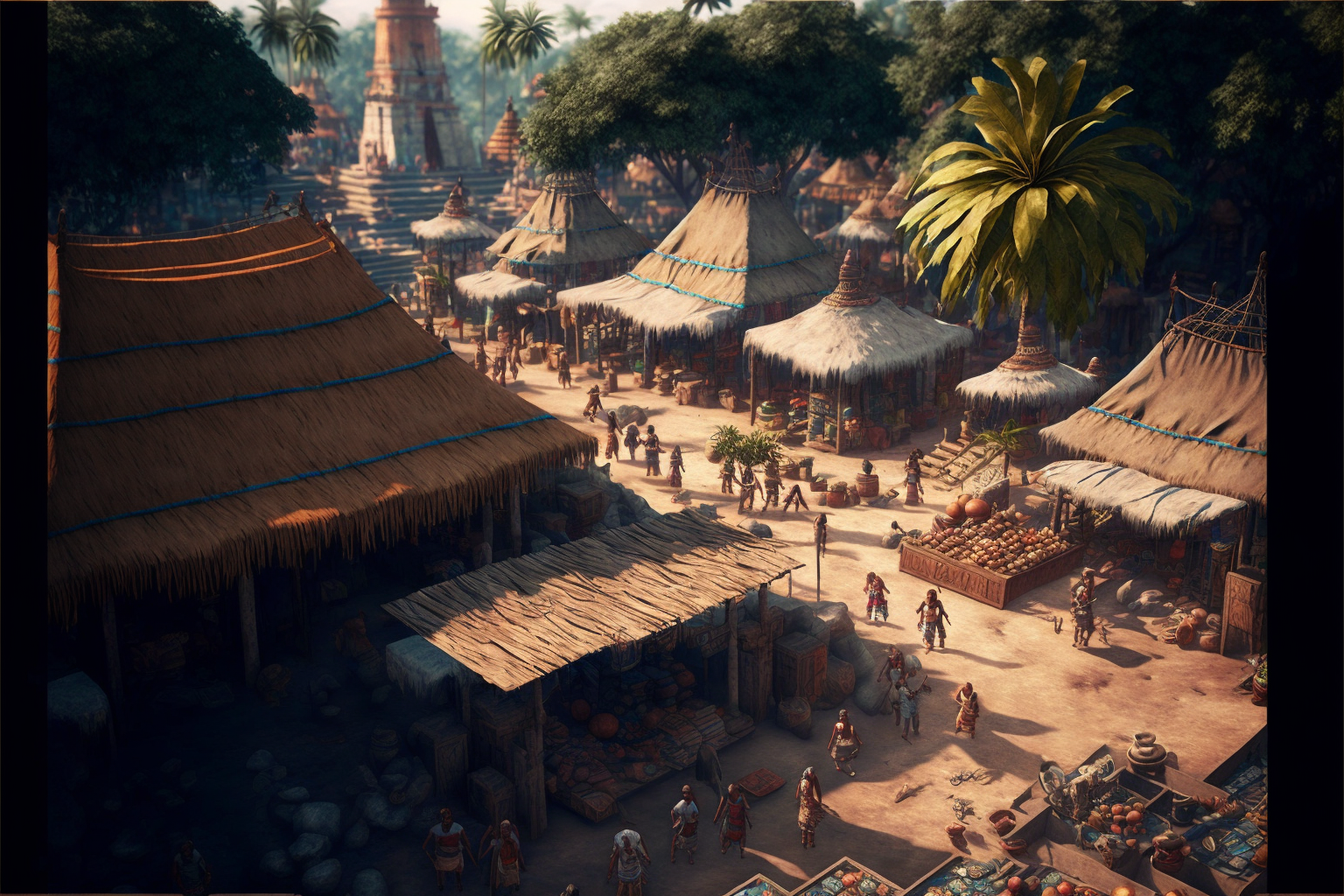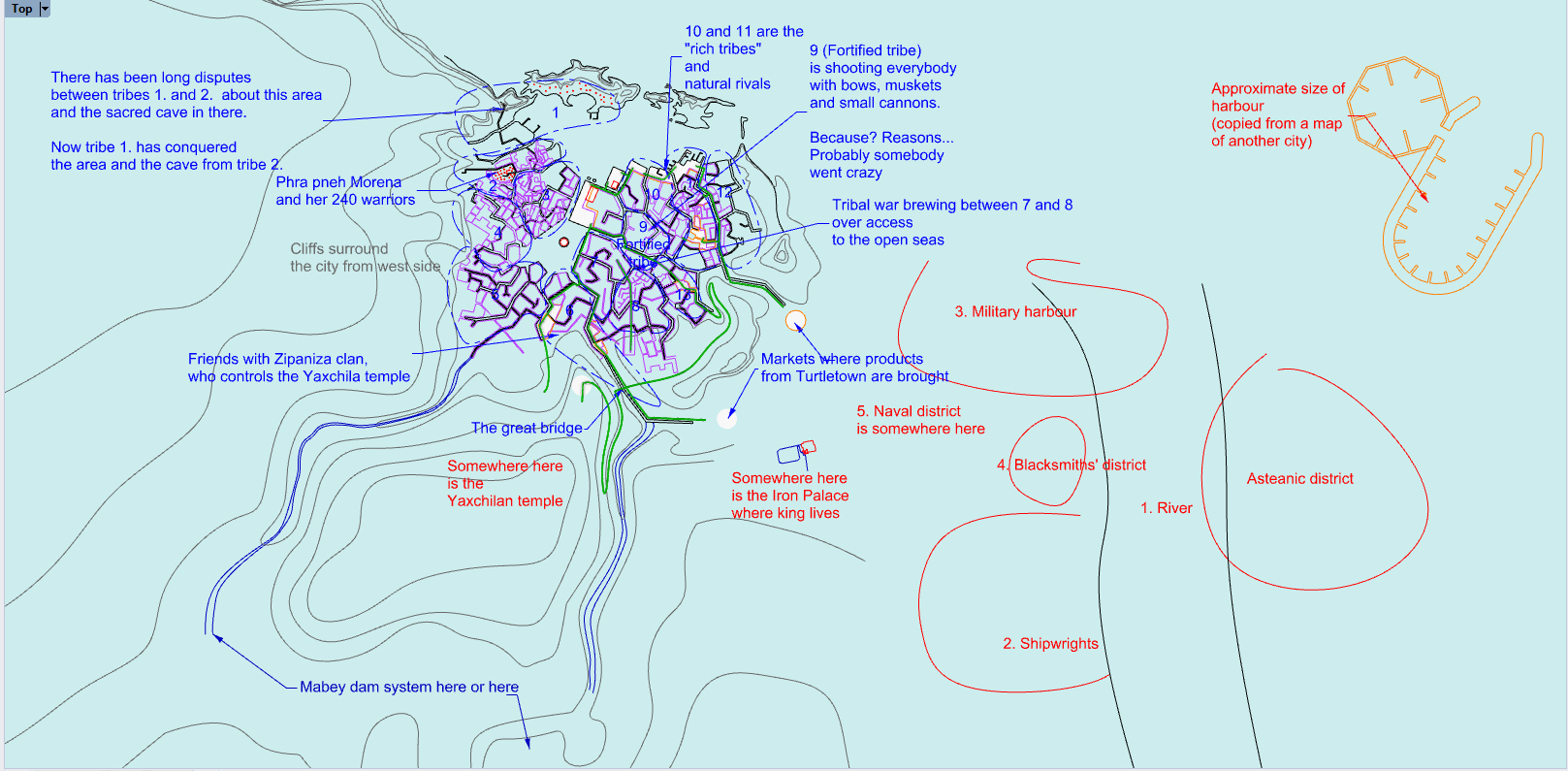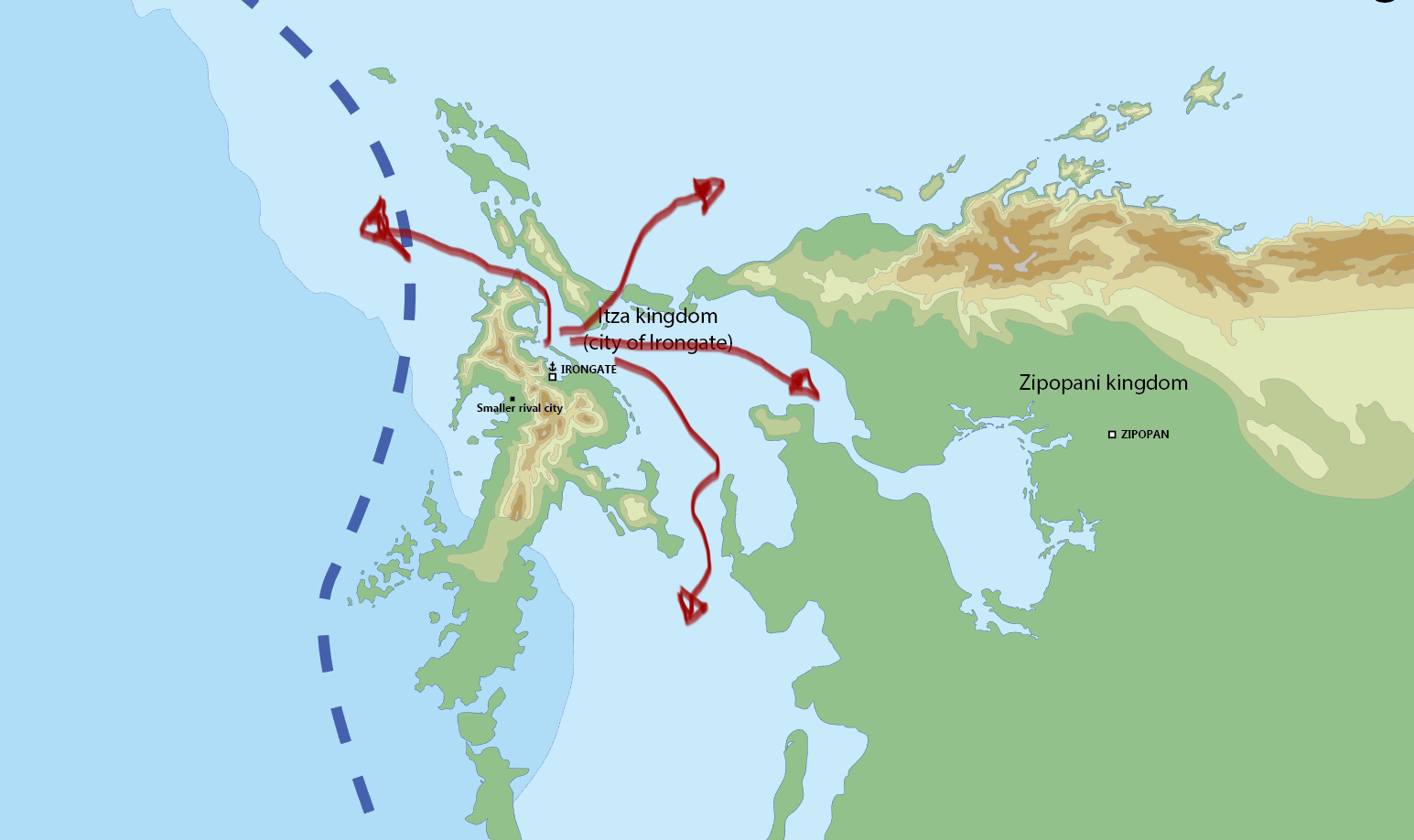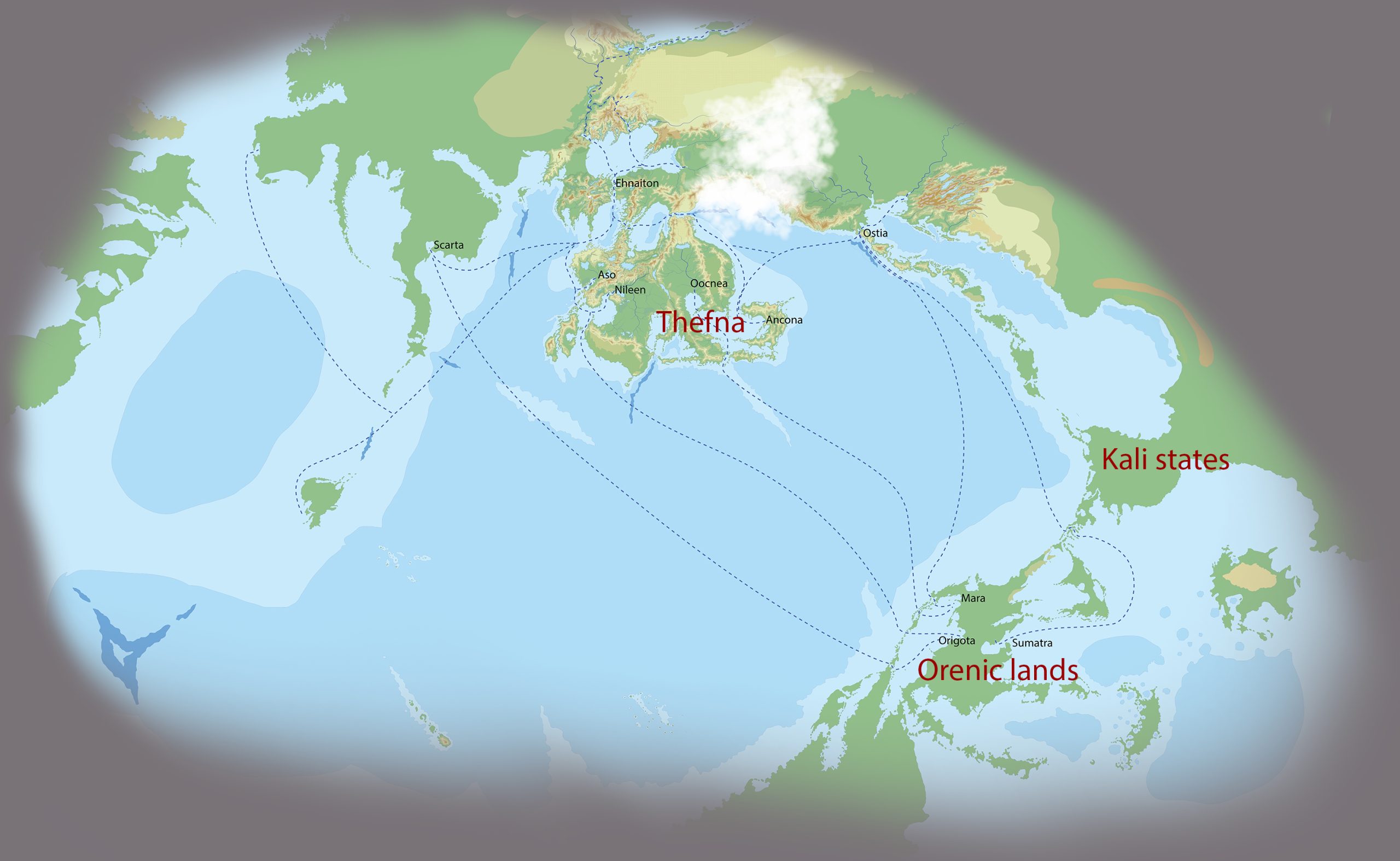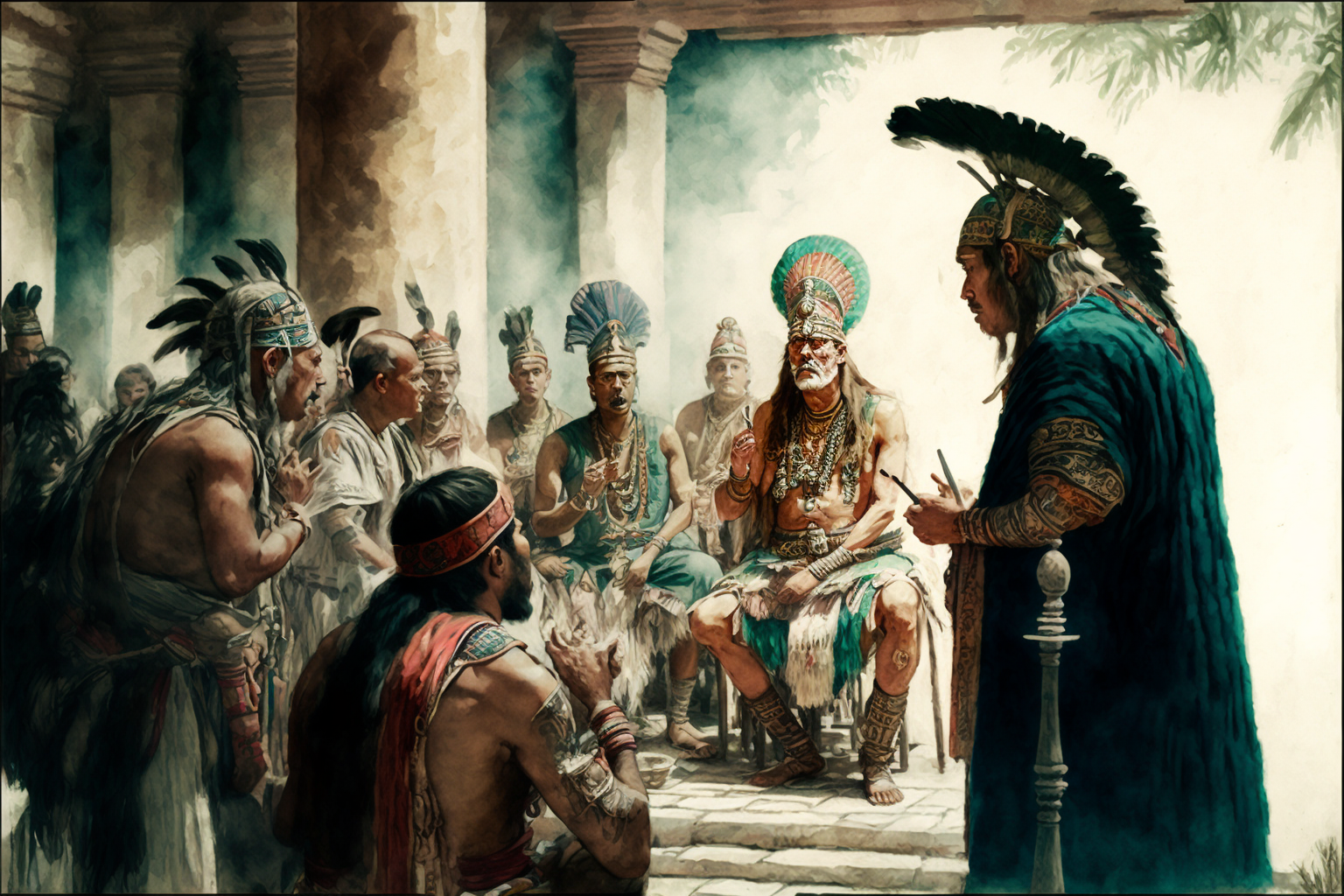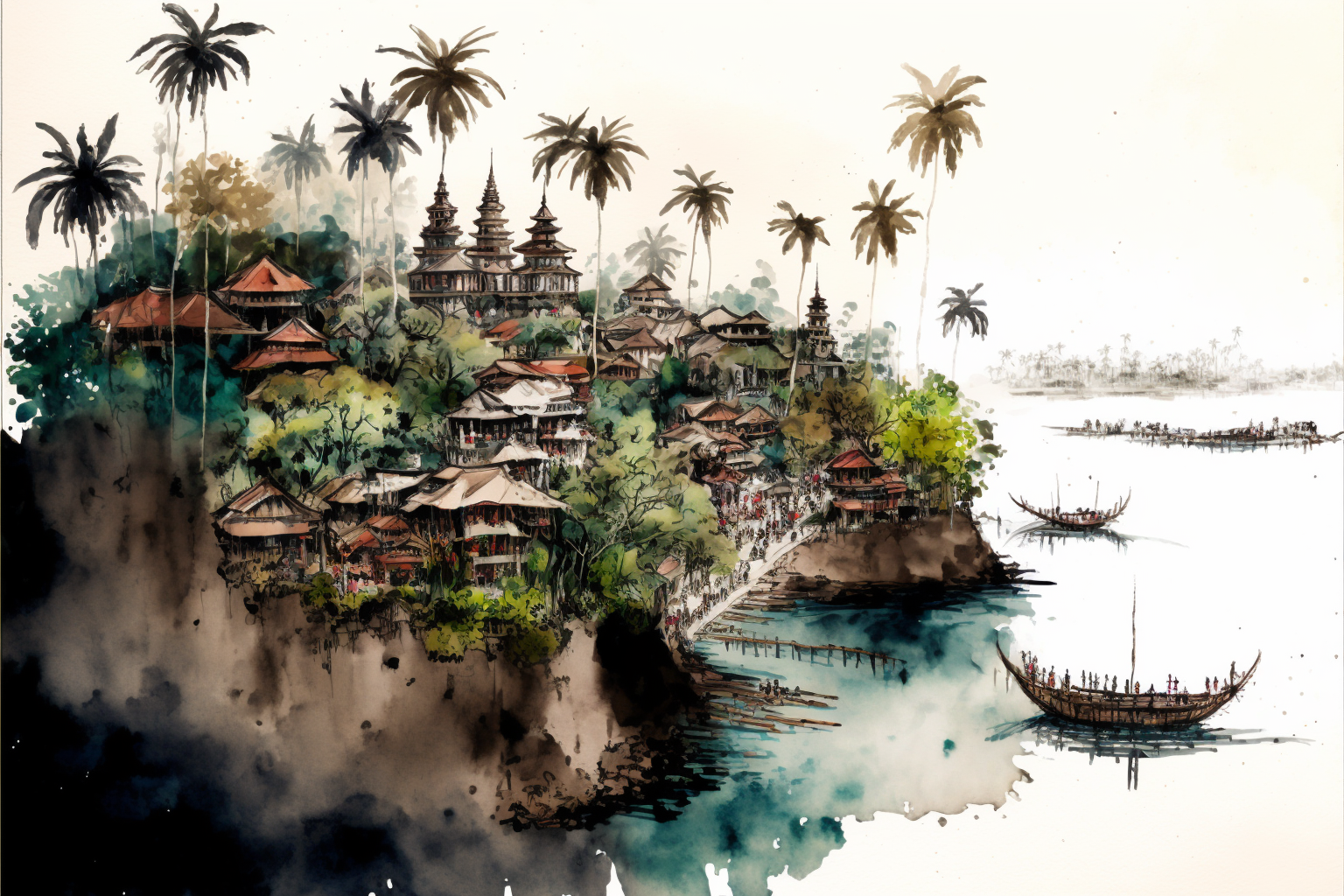As we are designing a city for a TTRPG game not for a novel, we also need to consider what the players will be doing there, so there is a need for an adventure.
Such a large and detailed city with many NPCs and locations is essentially a sandbox – a place where PCs can do anything and go anywhere. However, this does not mean that playing in it will be interesting in the end. Even with the most exciting NPCs and the grandest palaces and temples, the game may become boring if the players do not find any purpose and just mill around as tourists.
Another issue is liveliness. When the PCs first encounter NPCs or visit a location, they see and hear things for the first time – everything is exciting. However, after the fifth or tenth game session, when it becomes clear that every NPC is sitting on the same chair as when they first met, and all the exciting intrigues have not progressed anywhere, then the world would seem computer game-like and static to the players. The world must not only react to the PCs’ actions, things have to happen without their involvement also.
Therefore, when designing a city, we are actually designing an adventure – that’s why I started with NPCs, to establish some adventure starters and intrigues. The city map is beautiful to look at, but it does not fill the game sessions with quality content on its own. The map is helpful for describing the city, understanding locations, and distances, and of course for holding city battles (SAKE has strong strategy game elements that allow for battles on a unit scale, and in this case, the city map is the battlemap).
To make the city interesting, we need two things:
- A reason for the PCs to be there. A short adventure that the players will start solving right away and that will introduce them to the city. For example, the PCs do not go to the Yaxchila temple just to look around, but they have some missions related to it and so forth.
- Some overarching metaplot that runs from the PCs’ first adventure and even when the PCs are not directly involved with it. This helps to depict the city as lively. For example, stories of a dispute between two countries lead to war, and after some time the city’s military goes to war (crime in the city increases – PCs are being robbed), news of the war arrives, the economy starts to worsen (if the PCs want to buy something, prices are double), etc. – something that initially affects the PCs indirectly but more directly over time. This metaplot should be something that, with its all-encompassing nature, quietly surrounds the PCs, so that in the end it looks at their face from all sides and demands attention.
Additionally, this first adventure that introduces the PCs to the city should at least be indirectly related to the bigger metaplot.
Let’s start with the metaplot. Since I have produced almost a month’s worth of material about the city, I have some thoughts:
- A new war with the continental state of Zipopan, which destroyed the Irongate fleet 15 years ago and caused the collapse of the empire (inspired by history).
- Secret plans of the great house la Lazura, which may be:
- A desire to conquer the city
- Something related to gods and the afterlife, considering that Lardes la Naxos-Lazura is searching for two artifacts in the city.
- Both
- A rebellion is brewing in the city, as various tribes want independence or a change in power. There are many tribes and street fights are guaranteed. Kuklan Zipaniza is planning to become the new king.
- Lichgod Yaxchila has begun to show more interest in what is happening outside of his palace. Does the (un)dead god want to be king again? (Inspired by a rumor about Kuklan Zipaniza and the Zipaniza clan).
- Introduce more Asteanic great houses to the game, who will all compete for power and influence in the city.
- Potential suitors and potential wedding of the Rustking, as he has not yet chosen a partner, but there are some interested parties.
- Something completely different and new.
Today I am leaving the choice open, but from these ideas, one or even multiple can be chosen, as one does not exclude the other and the city is large.

Addon at 28. day:
28. day of #city23 │ #dungeon23 Choosing the first metaplot
Based on yesterday’s adventure design blogpost, I made my first choice in terms of metaplots today, and it is: great house la Lazura’s secret plans in the city, specifically Lardes la Naxos-Lazura’s potential quests for players or if the players don’t take them on, someone else in the city.
The ideas can be most easily depicted in a table. If the PCs don’t intervene, the Lardes-related metaplot develops as follows:

That’s it. Relatively simple and through rumors, the PCs can easily reach Lardes if they want to. In addition, now we need to create one or more NPCs who would be those adventurers whom Lardes hires if the PCs don’t work for him or choose the other side (Nene) instead. If the PCs do work for Lardes, however, we can use those NPCs for something else – for example, in some other metaplot.


